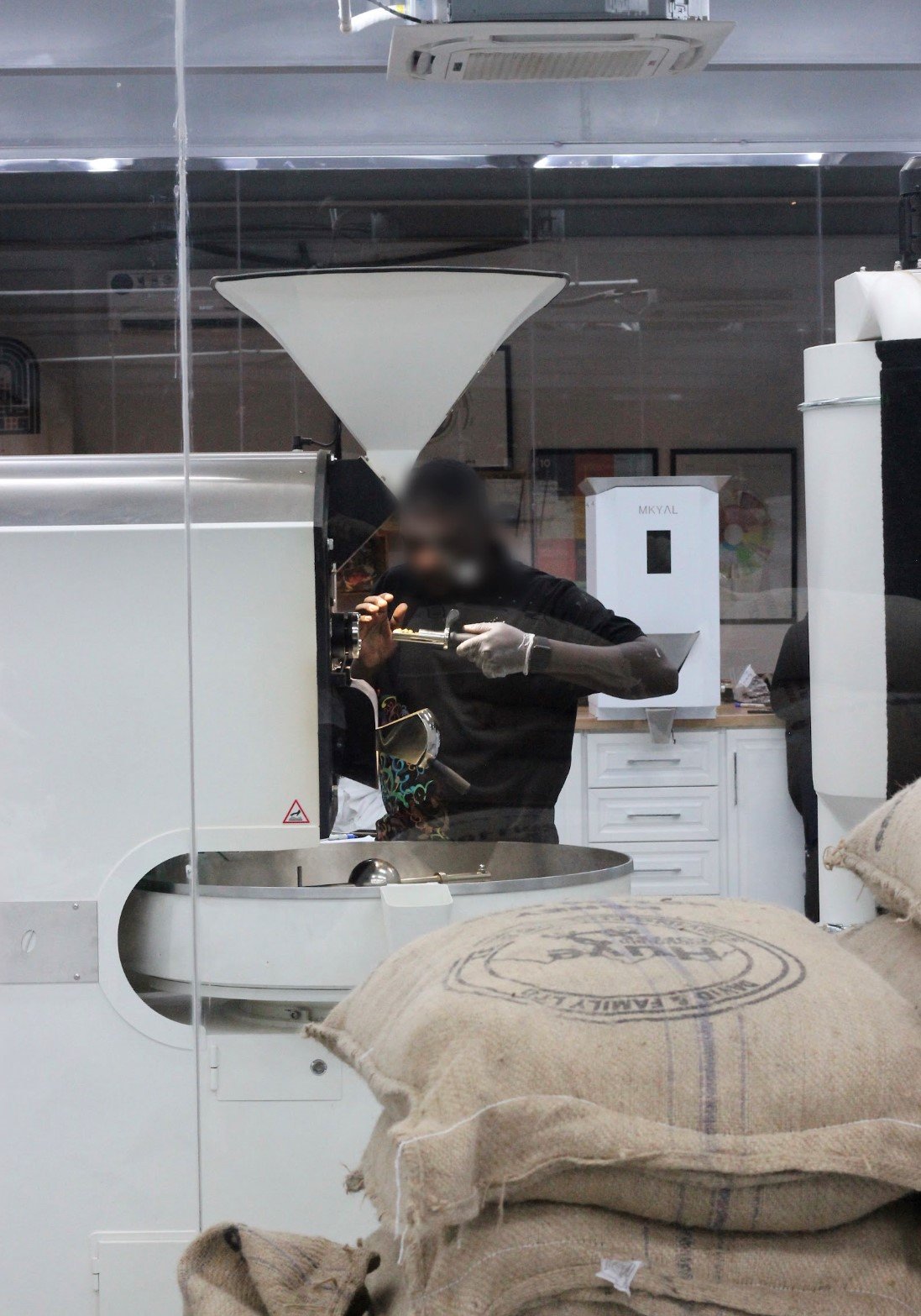Coffee Journey
Coffee's journey from seed to cup
When we sit down to drink a cup of coffee and enjoy its taste, we think about the long journey those beans have taken to reach our cup. However, the truth is that those beans have gone through many stages before they are ready to be ground and prepared.

Coffee fruit:
The coffee beans used in coffee come inside a cherry-like fruit called a coffee cherry. Each cherry usually contains two seeds, each representing a coffee bean. The coffee is covered by an outer shell that hides the seed.
Agriculture and growth:
When a farmer wants to make coffee the main crop on his farm, he must wait at least three years to get his first coffee crop.
Harvest:
Most coffee harvesting is done by hand. In some cases, specialized machines are used, but there are obstacles preventing the spread of this technology.
As for manual harvesting, it is done in one of two ways: either by picking each cherry individually or by collectively picking all the cherries on the trunk branch. Note that the first method often helps in selecting cherries that are sufficiently ripe.
Treatment:
Processing is done by drying in one of three main ways as follows:
- Natural drying treatment:
In this method, coffee cherries are placed on raised beds under the sun, which contributes to the production of coffee with a complex fruity flavor.
- Washed treatment:
The fruit is completely removed using a specialized tool, and the beans are then collected in a basin of water for washing, which removes the gelatinous liquid stuck to the coffee. The beans are then dried on surfaces exposed to the sun. The resulting cup is less fruity and clearer than its counterpart processed by the natural drying method.
- Honey treatment:
This is a new method that combines the two previous treatments. The fruit is removed using special tools, but it is not washed, leaving the gelatinous liquid on it. It is then dried in this condition.
In all three cases, the coffee is dried until the moisture content of the coffee bean reaches between 10 and 14%. The coffee is then sent to silos and stored for at least 15 days. The husk is then removed from the coffee, and the coffee is sorted and graded according to quality.
Fermentation Overview
Fermentation is an essential part of preparing many of the foods found in our daily lives, such as bread and yogurt. It relies on microorganisms feeding on the sugars in the prepared product, which in turn produces byproducts that give the product its familiar shape or taste.
In the world of coffee, and in coffee processing in particular, fermentation is an essential part of the process that gives coffee its distinctive flavor. It relies on bacteria and yeast—naturally present in the processing environment—feeding on the sugars in the gelatinous substance surrounding the coffee cherry. This nutrition produces byproducts—such as organic acids—that are absorbed by the coffee bean. When roasted, they yield the distinctive flavors we seek in every experience. Of course, microorganisms lose their ability to survive during the final stages of coffee processing, specifically when the internal moisture of the coffee bean reaches approximately 14%.
fermentation in an anaerobic environment
All of this happens regardless of the processing method, so what's different about anaerobic fermentation? The oxygen-deprived environment of anaerobic fermentation has two main benefits. First, it slows the drying process, which creates flavors different from those produced by rapid fermentation under normal conditions. Second, this environment fosters a completely different environment for bacteria and yeast than those found in an oxygen-rich environment, resulting in different flavors in roasted coffee.
Where does the anaerobic coffee brewing stage come in?
This fermentation step typically comes first. When the coffee arrives at the processing plant, before the coffee cherries are removed from the coffee bean, it is fermented either in stainless steel tanks or dense plastic bags. There is a way to remove carbon dioxide without introducing oxygen, and the acidity, timing, and temperature are closely monitored in an anaerobic environment. After the anaerobic fermentation stage is complete, the coffee can be processed using any of three common methods: washed, dried, or honeyed.
The difference between anaerobic fermentation and carbon maceration
The distinction between the two types here is based on the conventions of each term, not on an actual difference in meaning. Typically, what we described above is referred to as carbon infusion, whereas if the fruit is removed and the gelatinous substance surrounding the coffee bean is collected and formed into a liquid in which the coffee bean is placed in an anaerobic environment, this is called anaerobic fermentation. For the purposes of this article, we use the term "anaerobic fermentation" to describe carbon infusion and anaerobic fermentation as they are commonly known.
Is coffee really different?
Anaerobic fermentation requires careful monitoring of the crop and extreme care from the coffee processor. Therefore, not all anaerobic-treated coffees will yield exceptional results. However, if the processing is successful and done correctly, the flavors will truly be different. But don't just take our word for it here; you can try our newest crops, anaerobic-treated.
Adding flavors to the anaerobic environment
Experiments conducted by processing plants include adding various food items to the anaerobic fermentation medium (usually not carbonated), such as spices or tropical fruits, in an attempt to impart new and different flavors to the coffee. Many people may oppose this idea, given its impact on the coffee itself and the region and country from which it originated. We share this viewpoint, and for the time being, at least, you won't find us offering anaerobic coffee with added flavors.
Chickpeas and storage:
After the coffee is processed, it is ready for shipping. It is sent thousands of kilometers by cargo ship until it reaches the roasting location. After ensuring the coffee's quality, it is roasted in a way that highlights the qualities of that type of coffee and the unique characteristics of the place where it was grown.
After roasting, coffee should be stored away from outside air and light, and it is preferable to use it within seven to thirty days from the day it was roasted.
